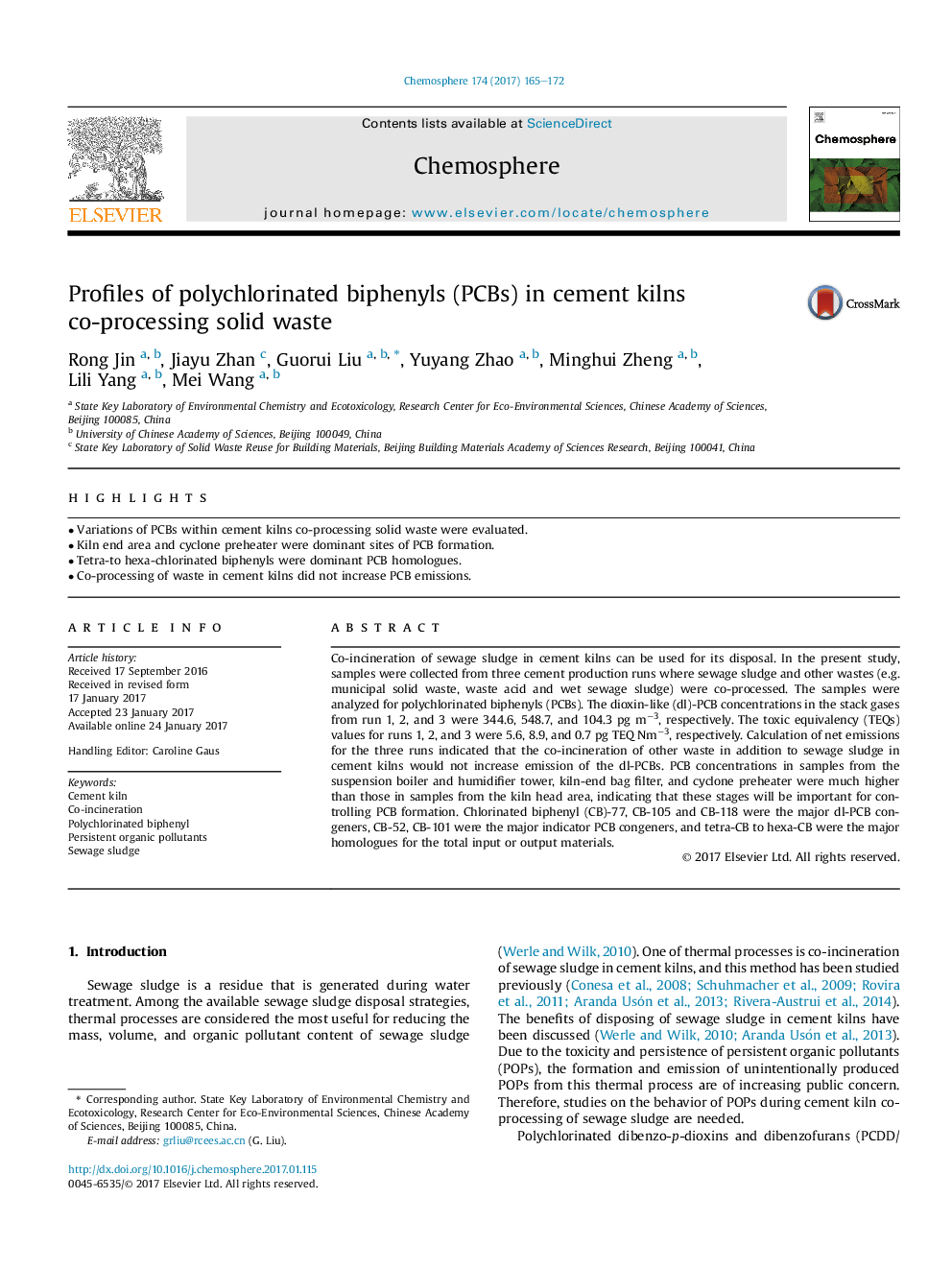| Article ID | Journal | Published Year | Pages | File Type |
|---|---|---|---|---|
| 5747293 | Chemosphere | 2017 | 8 Pages |
Abstract
Co-incineration of sewage sludge in cement kilns can be used for its disposal. In the present study, samples were collected from three cement production runs where sewage sludge and other wastes (e.g. municipal solid waste, waste acid and wet sewage sludge) were co-processed. The samples were analyzed for polychlorinated biphenyls (PCBs). The dioxin-like (dl)-PCB concentrations in the stack gases from run 1, 2, and 3 were 344.6, 548.7, and 104.3 pg mâ3, respectively. The toxic equivalency (TEQs) values for runs 1, 2, and 3 were 5.6, 8.9, and 0.7 pg TEQ Nmâ3, respectively. Calculation of net emissions for the three runs indicated that the co-incineration of other waste in addition to sewage sludge in cement kilns would not increase emission of the dl-PCBs. PCB concentrations in samples from the suspension boiler and humidifier tower, kiln-end bag filter, and cyclone preheater were much higher than those in samples from the kiln head area, indicating that these stages will be important for controlling PCB formation. Chlorinated biphenyl (CB)-77, CB-105 and CB-118 were the major dl-PCB congeners, CB-52, CB-101 were the major indicator PCB congeners, and tetra-CB to hexa-CB were the major homologues for the total input or output materials.
Keywords
Related Topics
Life Sciences
Environmental Science
Environmental Chemistry
Authors
Rong Jin, Jiayu Zhan, Guorui Liu, Yuyang Zhao, Minghui Zheng, Lili Yang, Mei Wang,
